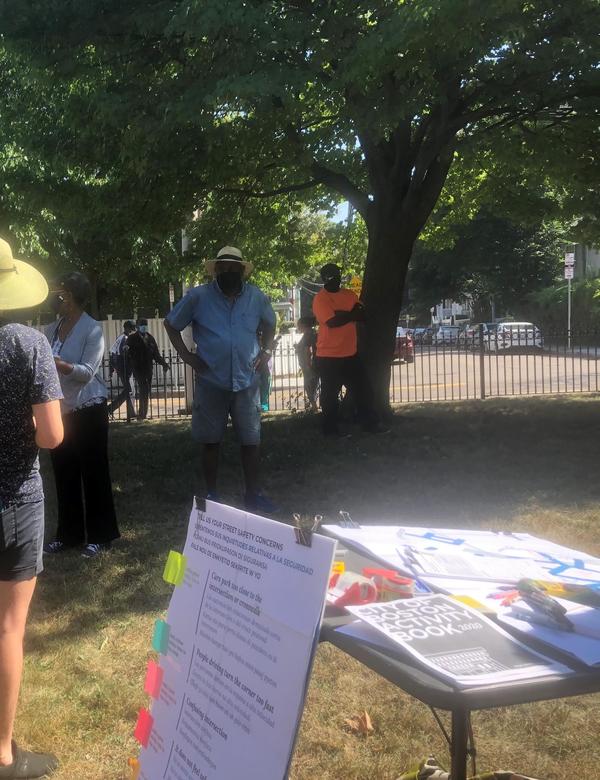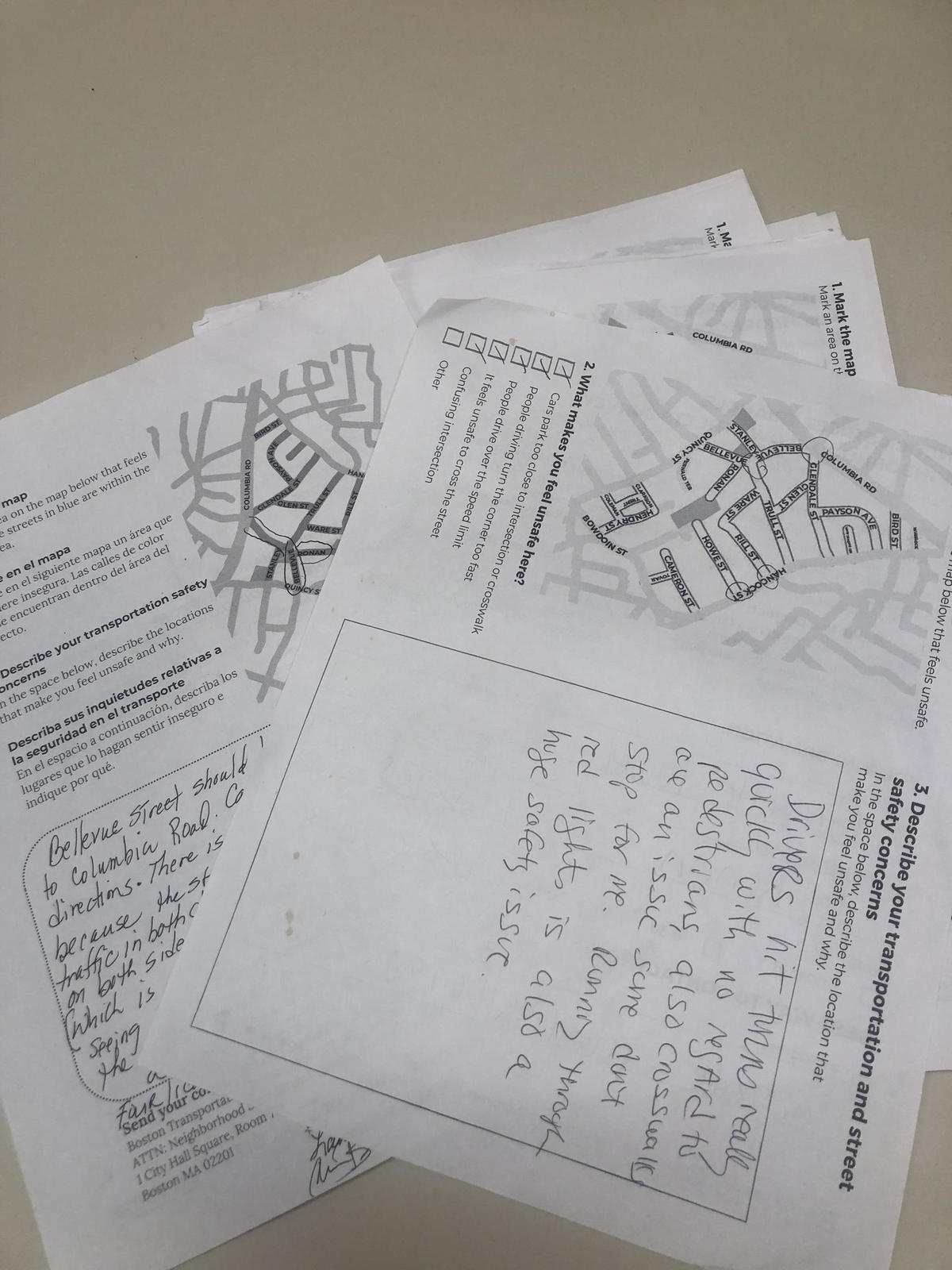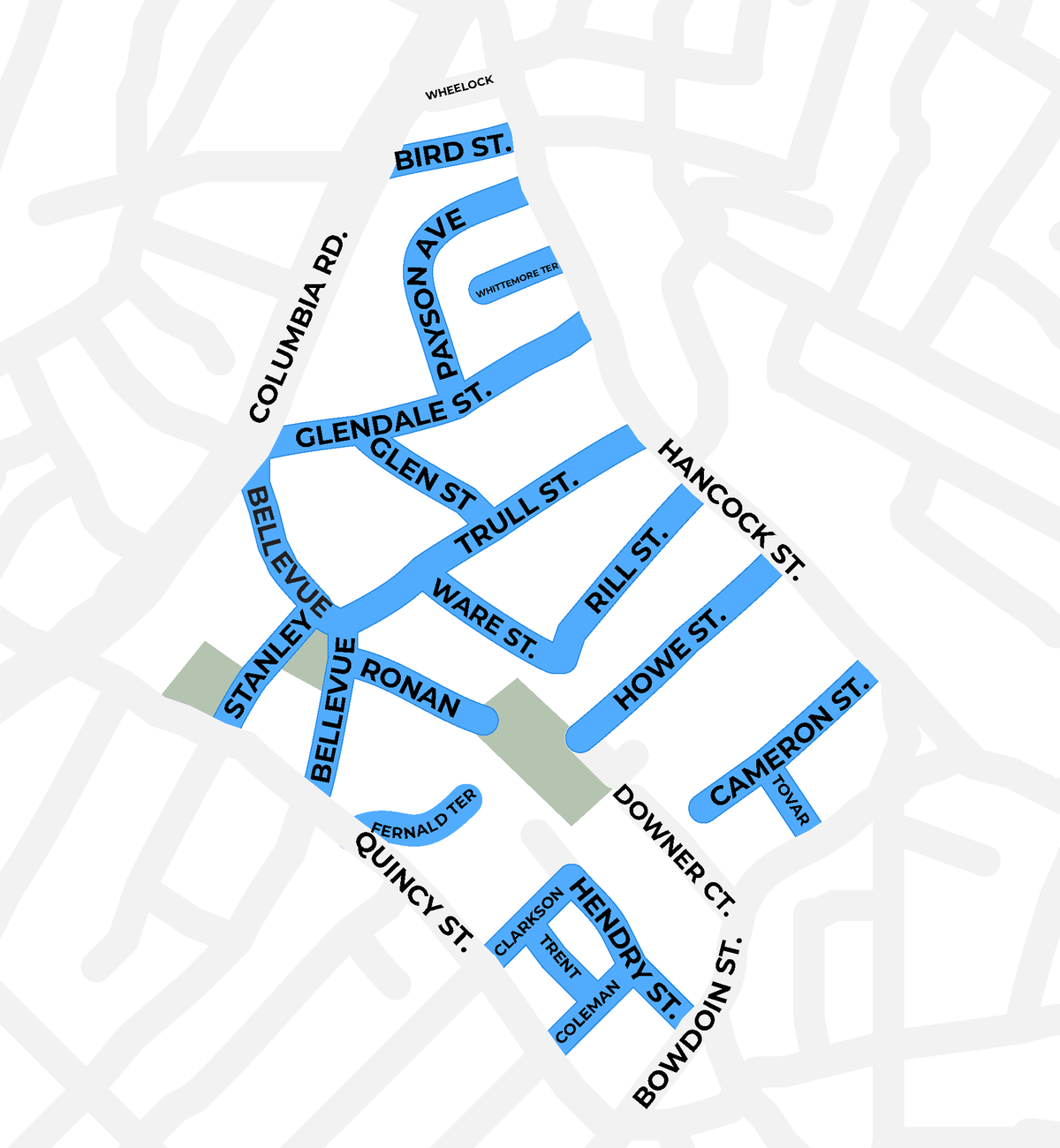Hancock Street Triangle
This page contains information about the Neighborhood Slow Streets plan for Hancock Street Triangle.
Neighborhood Slow Streets is an approach to street safety requests on minor residential streets in Boston. We're focused on street designs that self-enforce slower speeds and safer behaviors. Through this program, we aim to:
- reduce the number and severity of crashes on the minor residential streets
- create safer streets for walking and biking
- add to the quality of life in neighborhoods.
Project Summary
From 2020 to 2022, we worked with neighborhood residents to understand their transportation safety concerns and develop a plan to address them. Through a series of community meetings, we proposed new street designs that respond to concerns about speeding, visibility, fast turns, and crossing safety.
Before reaching final designs, we shared proposals along the way and made modifications in response to feedback. You can read about the plan and view presentations from previous meetings on this page. We are aiming to install these changes in 2023.
FALL 2022 DROP-BY MEETINGS RECAP
Fall 2022 CHAT WITH THE PROJECT TEAM series:
We invited residents to chat with us in-person in parks and review the Slow Streets plan.
TUESDAY, AUGUST 9, 2022: 4:30 - 6 P.M.Stanley-Bellevue Park
TUESDAY, August 30, 2022: 4:30 - 6 P.M.Stanley-Bellevue Park
TELL US WHAT YOU THINK!
WAYS TO GET IN TOUCH WITH US:
- Email us: slow.streets@boston.gov OR
- Schedule a 15-minute appointment to talk with us OR
- Send letters to: Boston Transportation Department ATTN: Slow Streets, 1 City Hall Square Room 721, Boston MA 02201
Learn more about the design
Community Meetings
Community MeetingsRecent meeting
We held a virtual meeting on February 2, 2022. The meeting covered intersections we are focusing on near bus stops on Hancock Street at:
- Hancock Street at Bird Street/Jerome Street
- Hancock Street at Trull Street
- Hancock Street at Rowell Street
- Hancock Street in front of the Conservatory Lab School
We shared updates on proposed designs, including:
- Streets determined eligible for speed humps
- Updates on the design for a safer crossing at Bellevue Street, Trull Street, and Ronan Street
We also led a discussion about changing the street direction on Bellevue Street between Quincy Street and Ronan Street.
Residents living in the zone will receive postcards in the mail about the project updates.
Follow-up
- Watch a recording of the meeting:
- English
- Portuguese
- View the presentation in English, Spanish and Cape Verdean Creole.
- We mailed a follow-up mailing to residents in the zone.
We held a virtual meeting on April 27, 2021, and shared initial ideas for safer crossings for your feedback.
On October 22, we held a virtual meeting. The meeting was advertised via direct mail to residents of the zone and through our email list.
At the meeting, we reviewed:
- the Neighborhood Slow Streets program, generally
- the common tools we use to address safety concerns
- concerns we heard online, by mail, and in-person, and
- the project timeline and next steps
We held an outdoor pop-up workshop in the neighborhood at the Stanley-Bellevue Playground on September 26. Residents dropped by to talk with us about their street safety and transportation concerns.
We start our design process by listening to residents' concerns. We asked people to share what they see happening on their streets and how they feel while out walking, bicycling, or driving. We use residents' stories and concerns to inform the design approach for the Slow Streets zone.
In the Hancock Street Triangle Neighborhood Slow Streets zone, we solicited feedback via:
- An online survey. Residents were able provide details and upload photos that describe their safety concerns. The survey was available in English, Haitian Creole, and Spanish. The survey was mobile-friendly.
- A mailed survey. Residents could choose to download and print the survey and send it to us by mail or email. Here's what the survey looked like.
Map of streets in the Slow Streets Zone
Streets within project area are marked in blue.
The Hancock Street Triangle neighborhood was added to the Neighborhood Slow Streets program in summer 2020. The City of Boston prioritizes neighborhoods for traffic-calming to serve first those areas with the most need. We work in communities with more youth, elders, and people with disabilities and where there are more public places, such as libraries, schools, and parks. We also consider the crash rate per mile on local streets.





